I was keen to discuss the FlightLab concept with the Airbus Team. In a 'previous life' I was an Operational Test & Evaluation pilot and flight commander at the Joint Helicopter Command Operational Evaluation Unit (JHC OEU) in the UK. One of our sub-units was 667 (Development and Trials) Sqn, Army Air Corps (AAC), which had a small fleet of Lynx and Gazelle aircraft to carry out low Technology Readiness Level (TRL) flight test and experimentation of new equipment, concepts and technologies. Sadly, the very capable Lynx airframe (on which the UK had conducted a number of EO/IR sensor, Defensive Aids, weapons and Degraded Visual Environment (DVE) trials on) was not replaced by a Wildcat when the legacy Lynx was retired due to cost and aircraft availability grounds. With the Gazelle offering a lower capability, and itself at the point of retirement, the Lynx has been sorely missed within the R&D community in the UK as it offered a rapid and affordable route to take promising new equipment and ideas airborne early in their development cycle. Instinctively, I was drawn to Airbus' bold move in providing their own airframe for such endeavours, and I wanted to know more. After a flurry of Emails between the Heli-Ops team and the ever-helpful Gloria Illas at Airbus Media and Comms, a telephone conversation with Alexandre Gierczynski, FlightLab Project Leader, was arranged and enabled me to probe a little beyond the press release in terms of vision, capacity and direction.
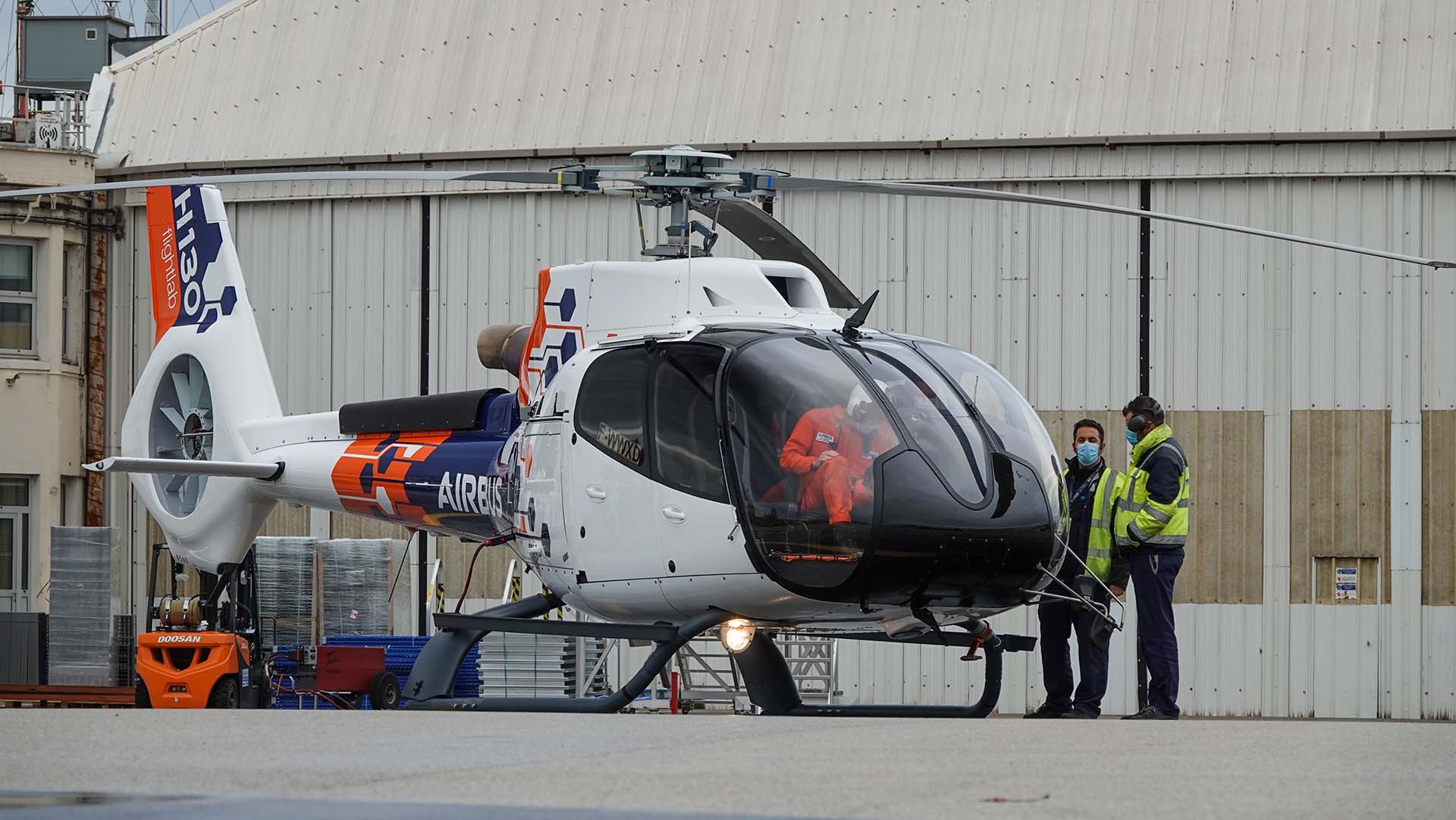
FlightLab Construct
Alexandre's opening point was to position the H130 within the overall Airbus FlightLab construct. He explained that the concept assembled aircraft, flight test experts (Test Pilots and Flight Test Engineers), design engineers and techno-brick leaders. The H130 was but part of a 'stable' of Airbus products that made up the FlightLab assets; the team also has access to an A340, A350 and A330 from Airbus' own product line and, interestingly, an Avro RJ-100 (BAE 146 in 'old money'). Whilst the Airbus vehicles have a clear role in developing technology that can, in time, be directly ported onto a 'company' product, the RJ-100 has been acquired to provide a dedicated trials platform for a collaboration with Rolls Royce and Siemens to conduct flight testing of a battery powered electric engine in place of one of the aircraft's normal Avco Lycoming ALF-502 engines (which, as an aside, is the same core engine as the T-55 which powers the Boeing Chinook).
Conceptually, FlightLab works via a 'vertical maturity' method. A concept is broken down into a series of 'techno bricks' which are 'stacked' vertically until they reach a maturity threshold which enables them to be considered for a slot on one of the FlightLab aircraft. Key to this is, in Alexandre's words, 'matching the maturation to the aircraft'. In other words, the Project Managers earn their crust by ensuring that the pace of building the 'tower of bricks' is, wherever possible, aligned with the capacity of the design engineers to adapt it to the relevant platform, the Airbus Part 21J Design Organisation Approval (DOA) process to deem it safe to operate and, not least, the availability of the trials platform and flight test crews. Clearly, as Alexandre explained, with only one FlightLab there's little point in maturing and clearing a product for flight if the aircraft must enter a scheduled maintenance period. However, he was also quick to explain that the purpose of the 'brick' approach is to enable technology to be tested quickly, if only to be discounted, and to minimise effort and cost in doing so.
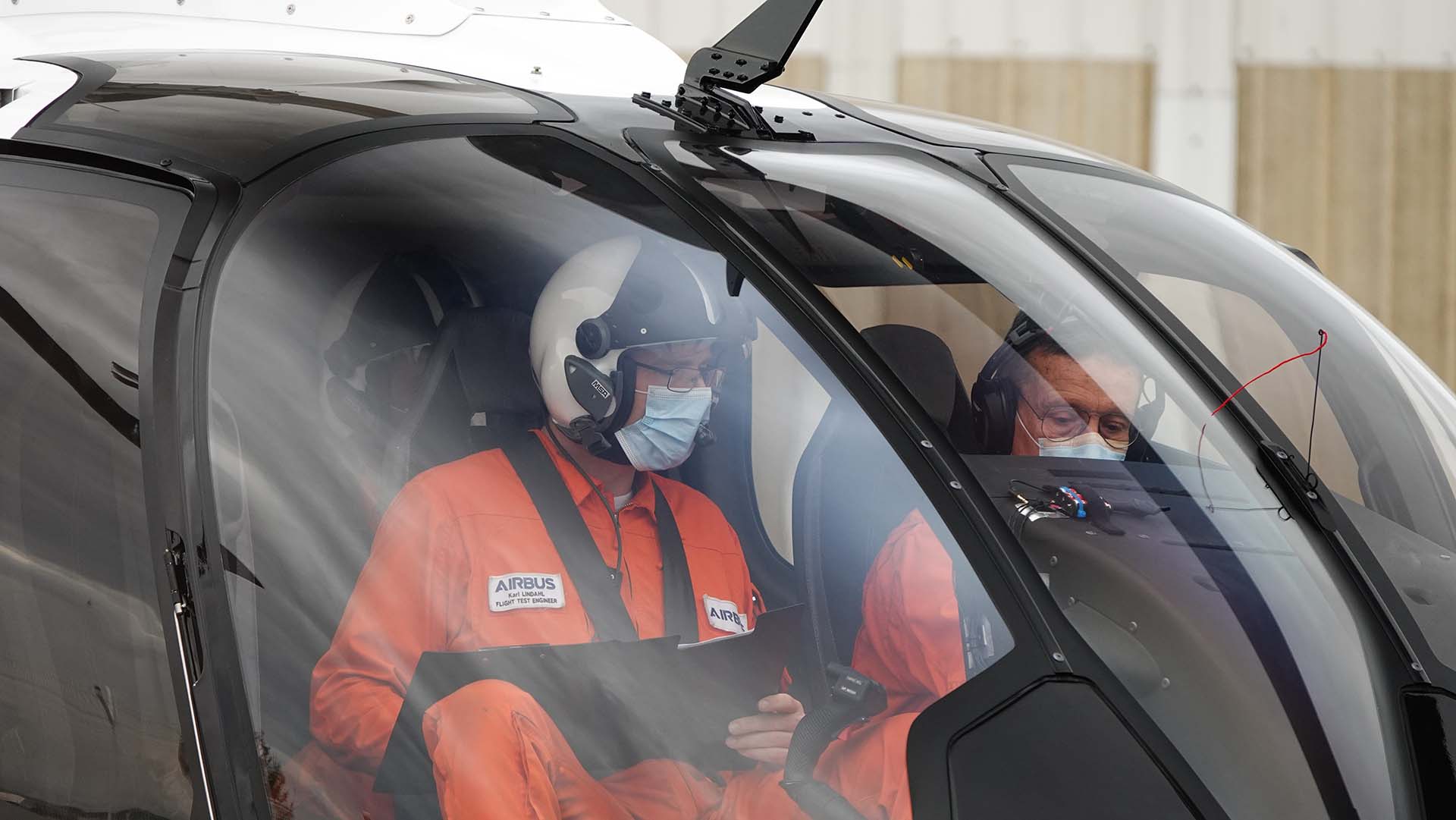
Rapid Development
Why is speed so important? As a technologist I'm well-aware that several promising concepts and technologies falter at the TRL 6 level (broadly, prototype equipment in a representative environment and never making it to TRL 8 (an actual production system once flight qualified), let alone TRL 9 where qualified equipment is deployed and used operationally. In the technology development world, this TRL 6-8 gap is known as 'The Valley of Death'; if a concept or product cannot be proven to offer an advantage or swift return on investment, then funding is withheld and the project withers on the vine until cancelled. Speeding up the process, maintaining momentum, and taking concept technology into the flight test arena early, to convince sceptics of its value, can all contribute to an improved chance of crossing the 'TRL Valley of Death' (which, it must be remembered, is often matched by a financial and programmatic equivalent)
One of the advantages of the lost 667 Sqn Lynx capability, was the ability for the engineers, pilots and command chain to take a pragmatic
view on the risks of conducting a flight test involving new equipment. 667 Sqn had assembled a small band of SQEP (Suitably Qualified and
Experienced Personnel) who knew the interfaces to the aircraft well, and integrated equipment in a sensible way; for example, there's little
point in overdesigning a bracket or conducting a full life-cycle stress calculation for an item that may be on the aircraft for a handful of
flight test hours in a highly controlled environment. Sadly, in the UK, the ability and enthusiasm for the increasingly risk-averse
regulators to take this pragmatic view has waned; the last Technology Program I had an input to saw costs soar as the experimental equipment
we intended to fit for a 20-30 hr flight test program had to be certified to the minimum standard for a Release to Service approval.
Alexandre explained that the FlightLab process was incremental in nature, building on the vertical maturity method that the 'bricks'
employed. The concept would be rig tested, ground tested and then flight tested, with the latter gradually expanding the envelope of use.
The same people would oversee this rapid maturation, minimising the delay through re-briefing and the risk that items would get missed or
mistaken. He noted that the engineers worked closely with the Flight Test crews to ensure that the installation on the aircraft worked for
all parties, for example, circuit breakers would be placed within easy reach of the Flight Test Engineer so equipment could be rapidly
powered down if it overheated, misbehaved or threatened to distract the crew whilst they handled an emergency.
Emerging Themes
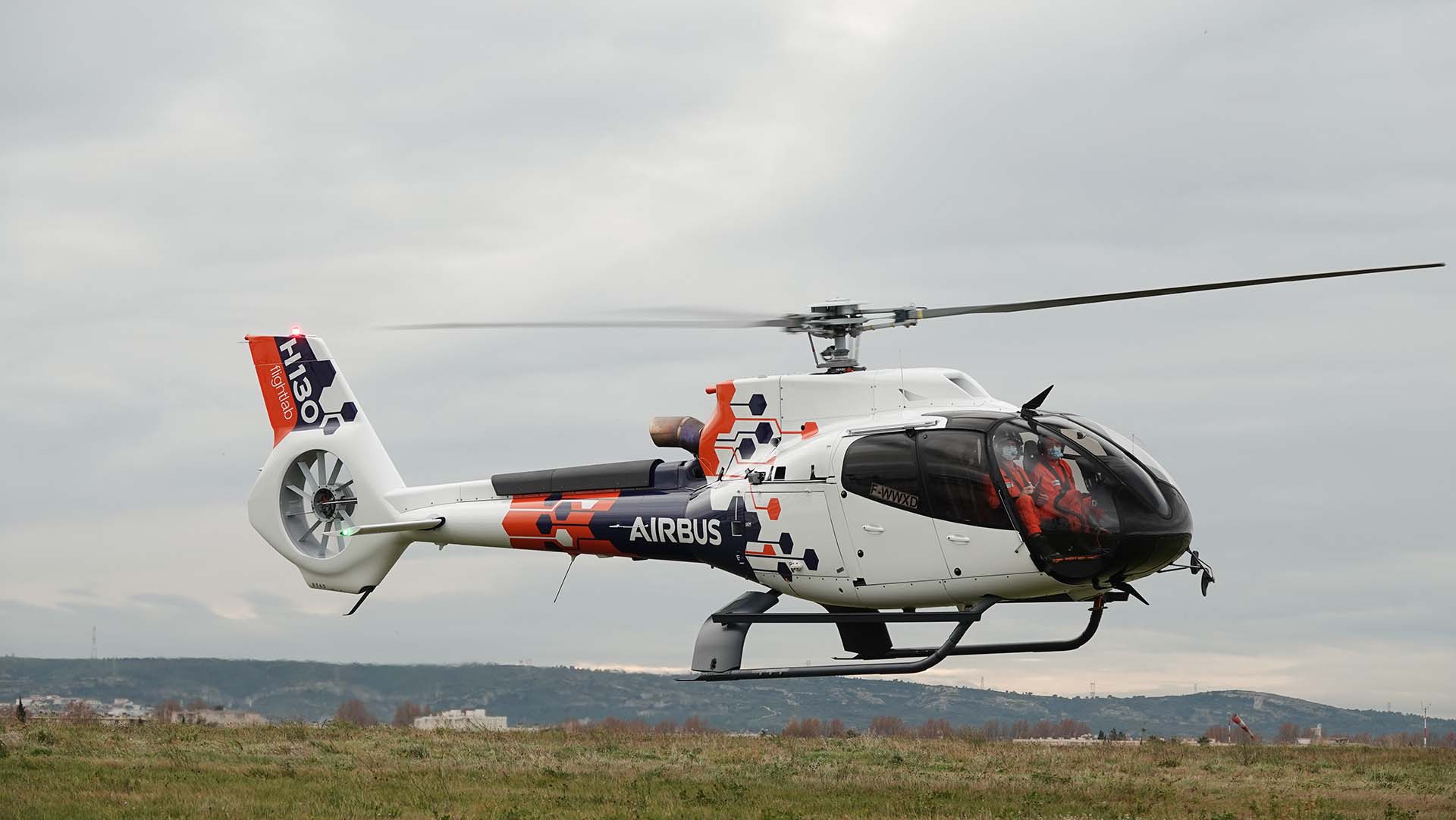
As FlightLab is effectively run as a business 'overhead', with the central budget funded only to provide only the Direct Operating Costs of the aircraft, crews and engineers, the Project Manager for each technology 'brick' must be adept at navigating their concepts through TRL 0-6, and in securing funding to do so. Sometimes, inevitably, certain themes emerge.
Looking at the technologies mentioned in the Airbus infographic, it's clear that many of the upcoming technology trials are aimed at maturing technologies for use in the Urban Air Mobility (UAM) space, and they may all have a part in the development of a production version of the Airbus RACER concept (see my article here). Key to gaining permission to operate future UAM platforms in city centres will be noise profile. Airbus Helicopters’ FlightLab is expected to be used to gather noise data and test potential methods for reducing the noise signature of a vertical lift platform of the future.
The proposal to look at a simplified 'UAM-style' pilot-vehicle interface (PVI) is intriguing.
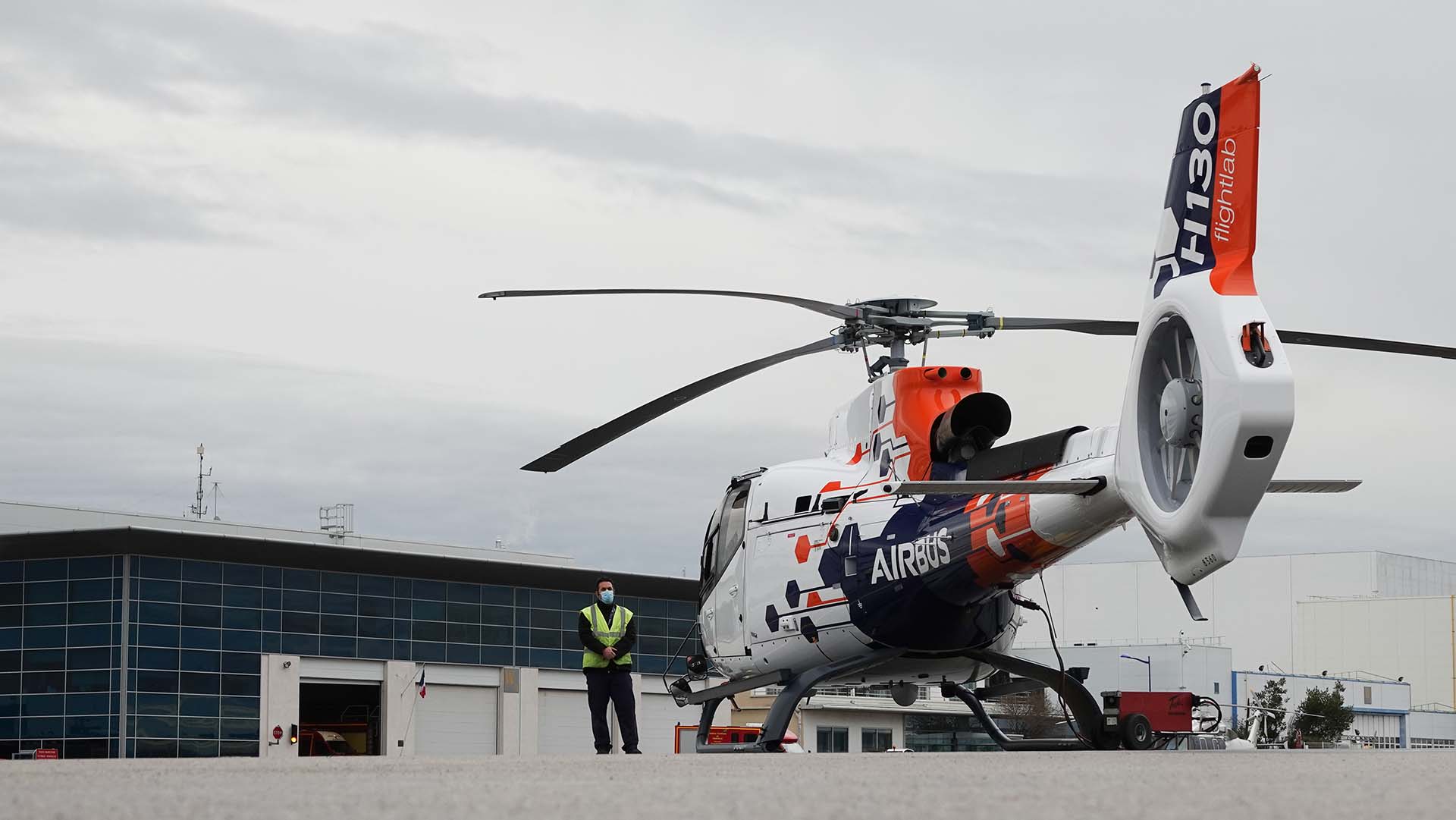
PVI Development
Helicopters have remained largely resistant to attempts to move away from the 'classic' set up of Cyclic, Collective and Yaw pedals. I recall having dinner with the accomplished pilot and engineer Nick Lappos at HAI a couple of years ago, and, over a very pleasant steak and a decent bottle of Malbec (clearly the editor wasn't paying...), he lamented the 'missed opportunity' that the RAH-66 Commanche presented; in short, the 'Fly By Wire' (FBW) system enabled the aircraft to be flown from a single, side mounted, hand controller. This did not find favour with the US Army, who insisted upon 'conventional' controls being installed. Alexandre echoed the sentiments I've heard from many in the UAM field that there is a 'pull' from the nascent UAM industry to move towards a type of 'de-skilled' pilot, that is cheaper and quicker to train than his or her forebears; analogous to a Uber driver downloading an App in seconds rather than spending months learning the streets they intend to work. The suggestion is that the increased use of automation, Artificial Intelligence (AI), Augmented Reality (AR), platform sensors and a highly evolved FBW PVI will make it far simpler to train and qualify ab initio pilots to 'command' UAM vehicles.
Airbus Helicopters FlightLab is slated to test many of these technologies; a simplified PVI that uses a sophisticated FBW control system to provide a stable platform which either flies fully coupled into an Urban Traffic Management (UTM) system or is simple to fly using a skill set acquired over several years and thousands of hours playing gaming consoles. The pilot of the future may need to opt to 'invert the X axis' in their set up preferences. A deskilled pilot will be cheaper to train and can therefore be realistically expected to be paid less, adding to the 'affordability' of UAM. Their restricted licences will not permit them to challenge the more established aviation hierarchy outside UTM areas, in a similar way that a glider pilot can't fly a A350 without significant additional training. In many respects, and in many of the UTM systems I've seen proposed, the pilot is effectively on board only to intervene if the UTM traffic management system fails, an undetected hazard threatens to hit the aircraft, or some other in-flight emergency occurs that requires manned intervention. Tacitly, in my opinion, the pilot will only remain in the UAM until society has been adequately sensitised to autonomous travel by the widespread use of self-driving cars.
The FlightLab will also look at evaluating a Rotor Strike Alerting System (RSAS) to warn the pilot that the aircraft is close to an obstruction and the EAGLE system, which employs a series of cameras and machine learning to, in effect, 'see and remember' a route / approach path or even a scene, such as a heli deck atop a building, and notice discrepancies if the 'scene' changes between visits, i.e. a new obstruction has been installed, or a 'pop up' threat such as a drone or large bird appears on the approach or departure. Alexandre also made it clear that advanced FBW control systems, RSAS and EAGLE were also key components of a fully autonomous aircraft and one that could have several military and civil applications. They are, as he described them, 'the building blocks of autonomy'.
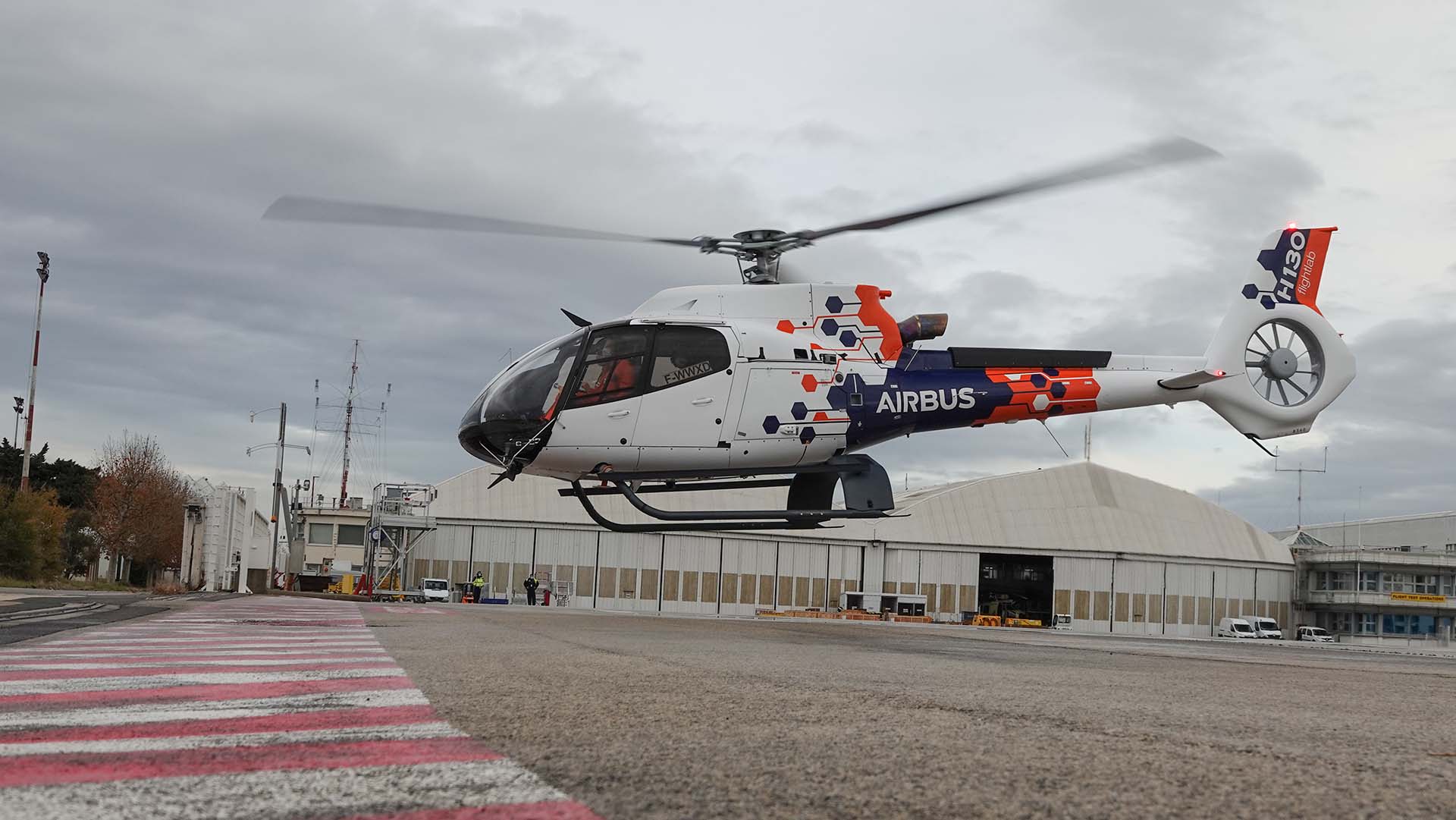
We also discussed the intriguing plan to test an evaluate the utility of the Engine Back-up System (EBS). When I was talking to Airbus about the RACER, they stated that to save fuel, reduce noise and limit engine wear, the RACER planned to routinely shut down one of its engines in the cruise. I noted at the time that despite shutting down an engine to conserve fuel being a regular part of military Maritime Patrol Aircraft sorties, it was not something that had been proposed in the civil transport field. Alexandre agreed that the FlightLab EBS trial was aimed at providing data to support RACER, but he also noted that the first use of the system would be as some form of emergency power reservoir in the event of an engine failure. In a twin, the EBS would, perhaps, make the difference between a stable and safe arrival or a rushed one, but in a light single such as the H130, the difference could be fundamental. As Alexandre explained, the concept now is to provide enough battery power to, in effect, energise the rotor system for 5-10 seconds at the bottom of a post-engine failure autorotation. Harking back to the comments re 'deskilled pilots', one of the skillsets that takes the most practice (and, I imagine, continues to pose the highest risk of accident or damage) is training for Engine Off Landings. If a system could be certified that enabled the pilot to regain a hover, stabilise, then conduct a normal landing in the event of an engine failure it could transform pilot training. Moreover, it opens the door to an 'aware' autonomous rotorcraft using its various sensors to recover automatically and make a safe landing after a power loss. As battery technology improves, the amount of power an EBS could provide will only get larger, further increasing safety margins. For RACER-specific use, Alexandre intimated that they will be gathering data on how swiftly and smoothly the EBS can detect an engine failure and intervene to match the required power. This would also help to increase the safety of the RACER if it operates at weights in excess of normal OEI limits.
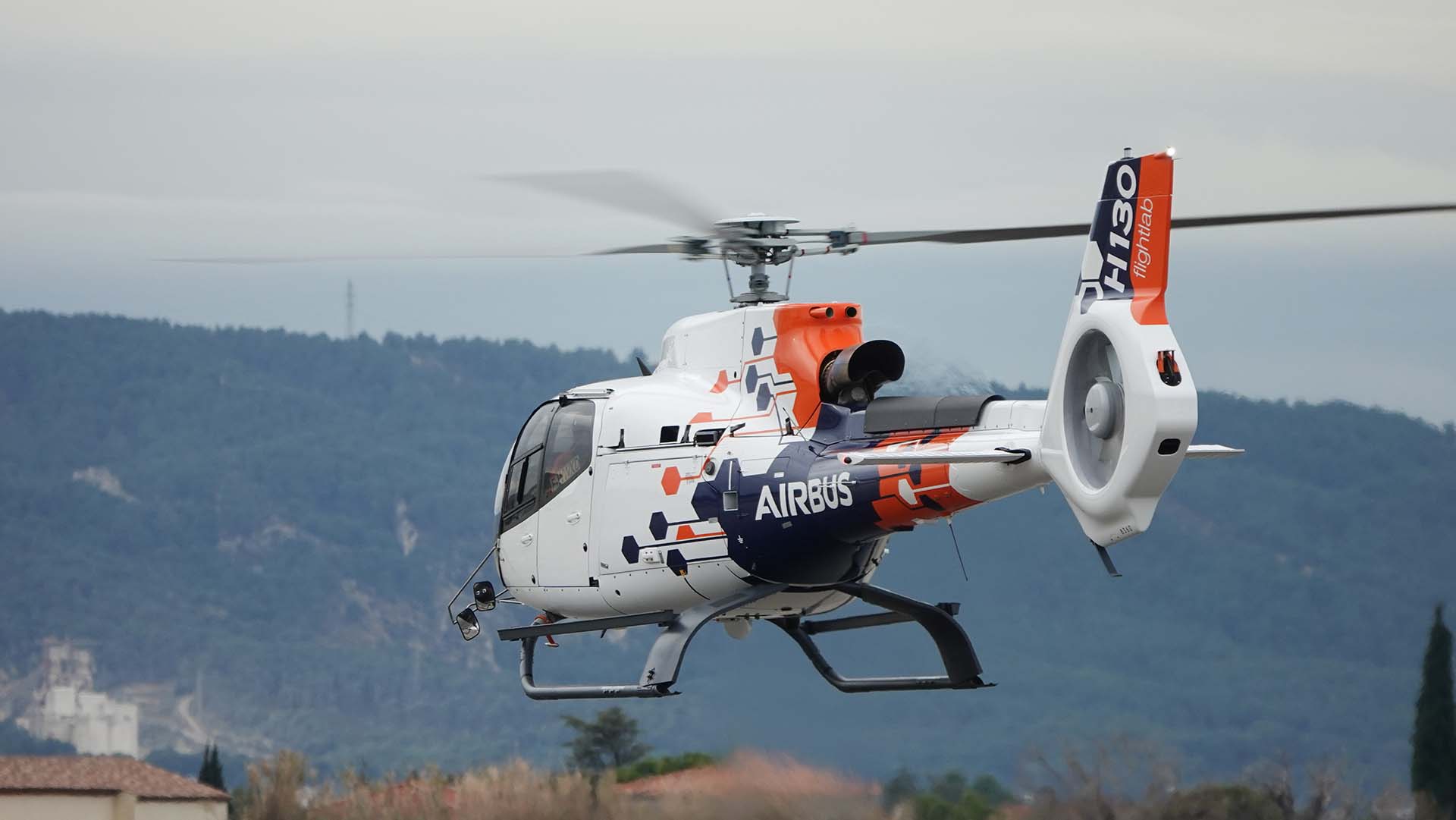
What's the Future for FlightLab?
I was keen to ask Alexandre if he saw FlightLab as an enduring capability, or one that would deliver some technical demonstration then fade away. He was quick to quash the notion that FlightLab would be of short duration. He explained that the H130 was merely the 'proof of concept' machine for the initiative, and it already had work and funding out to 2024. In this concept phase, and keen to keep costs down, the H130 platform was selected as a simple CS27 rotorcraft. he suggested that Airbus are already considering when to add a second, likely CS29 twin-engine, helicopter into the mix. A twin would afford more flexibility and space to conduct research and be more representative of Airbus' broader portfolio. In due course, Alexandre acknowledged, other additions could include either a high-speed rotorcraft or an Electric VTOL. I asked if Airbus had any plans to offer spare FlightLab capacity to academia, governments or technology SMEs. His response was that they are already doing it; some of the 'techno bricks' are being developed outside the Airbus group. Each candidate 'brick' is assessed and weighed on its technical merits, and if it presents a capability that Airbus' customers are seeking. It would be very interesting to see a Government agency engage with FlightLab as a form of 'quicklook' capability for technology to, potentially, support Urgent Capability Requirements.
I've seldom come away from an interview with such a degree of satisfaction. The bold move in investing in the FlightLab initiative gives Airbus the potential of a versatile and economic 'flying test bed' to demonstrate and develop, quickly, novel and innovative technologies in a representative airborne environment. It deserves to be a decision that pays off handsomely.
My sincere thanks to Alexandre for sparing the time to talk to me, and to Gloria for making the necessary arrangements.
